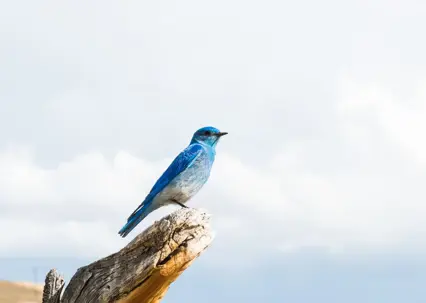Cultivating a healthy ecosystem in Nevada often starts with understanding how nature itself maintains balance. One critical component of this balance involves natural predators that help regulate pest populations in eco-friendly and effective ways.
From insect-eating birds to beneficial insects, these natural allies offer a sustainable pest control method that aligns with Natura Pest Control’s commitment to safeguarding the environment.
Helping Nevada Thrive Through Predator-Prey Relationships
In Nevada’s diverse landscapes—from desert terrains to lush residential gardens—well-established predator-prey relationships are key to limiting infestations. Various bird species and insect predators have evolved alongside common pests, creating an equilibrium that can be harnessed for an environmentally responsible approach to pest management.
For instance, many bird species are avid insect eaters. Insectivorous birds like swallows and wrens can dramatically reduce pest insect populations by feeding on mosquitoes, beetles, and caterpillars. This natural synergy lessens the need for harsh chemical interventions while boosting biodiversity around homes and farms.
Similarly, beneficial insects—such as ladybugs, lacewings, and parasitic wasps—prey on garden pests like aphids, mealybugs, and caterpillars. For example, one ladybug can consume up to 5,000 aphids throughout its lifetime. By strategically attracting these insects, neighborhoods can experience fewer pest outbreaks and fewer risks of cutworms or other invasions.
Encouraging Bird Life in Your Community
Making your property inviting to birds that control pests can be a highly effective strategy. Providing suitable nesting habitats—birdhouses and natural cover like shrubs and trees—helps these winged helpers settle in and continue their vital role in the ecosystem.
Many native Nevada plant species, such as desert willow and rabbitbrush, offer refuge and natural feeding spots for insect-eating birds. This approach allows them to hunt for pests around homes and gardens without relying on chemical solutions.
When offering bird feeders, focus on seeds that attract insect-eating species (like sunflower or safflower). Additionally, ensuring a clean water source helps birds remain healthy and active. Simple steps like these contribute to a bird-friendly environment that encourages ongoing pest control, one beakful of insects at a time.
Beneficial Insects as Tiny Allies
While some insects can be nuisances or even destructive, others are nature’s hidden heroes. Ladybugs often top the list of beneficial insects due to their appetite for various garden pests, but lacewings, parasitic wasps, ground beetles, and hoverflies also bring value. A balanced ecosystem brimming with diverse insect life can lower the chance of any single pest species dominating the landscape.
For Nevada residents interested in drawing these helpful insects closer, horticultural experts recommend planting nectar-rich, native flowering plants. These plants serve as an ideal habitat and food source for small predators, offering sustenance beyond the pests they hunt. Suggested examples include desert marigold and globemallow, which thrive in Nevada’s climate while encouraging beneficial insects.
Collective Action for Sustainable Pest Control
One household can play its part in fostering natural predators, but the true impact often multiplies when an entire neighborhood or community participates.
By sharing tips, seeds, and even beneficial insects among neighboring gardens, community members collectively reduce pest problems without resorting to chemicals. This united approach also ensures that once a pest outbreak is detected in one yard, predator-assisted control measures can help contain its spread rather than let it escalate.
Engaging children, local gardening clubs, and community associations strengthens this network of natural pest control. It becomes easier to maintain consistency in habitat creation, ensuring that birds and beneficial insects can freely move across contiguous yards or green spaces. Over time, the neighborhoods develop more stable biodiversity and are less prone to large-scale pest infestations.
Aligned With Natura’s Eco-Friendly Promise
Choosing to encourage natural predators perfectly reflects Natura Pest Control’s goal of offering treatments that respect the planet. We believe that a pest-free home or business environment should never come at the cost of polluting natural habitats or harming untargeted wildlife.
Each effort you make—from planting bird-friendly shrubs to introducing beneficial insects—reinforces our shared commitment to minimizing chemical reliance while preserving local biodiversity.
Where conventional pest control solutions might focus solely on removing pests, an eco-friendly stance promotes a healthier environment in the long run. It seeks to break the cycle of reinfestation by rooting out the causes and balancing the ecosystem rather than leaving it empty of both pests and beneficial creatures.
Taking the Next Step Toward a Balanced Community
When you invite birds, beneficial insects, and other natural predators into your living space, you become part of an ongoing mission to keep Nevada’s ecosystems strong and pest-free. Small actions such as mulching areas for ground beetles, planting native flora, and offering safe nesting sites for birds can result in a significant improvement in pest control.
If you want additional guidance on how to implement these methods effectively or to learn about the range of eco-friendly solutions we offer, connect with the Natura team today. By working together, we can ensure that natural predators thrive and our communities remain vibrant and balanced—all without resorting to unnecessary harsh interventions.

